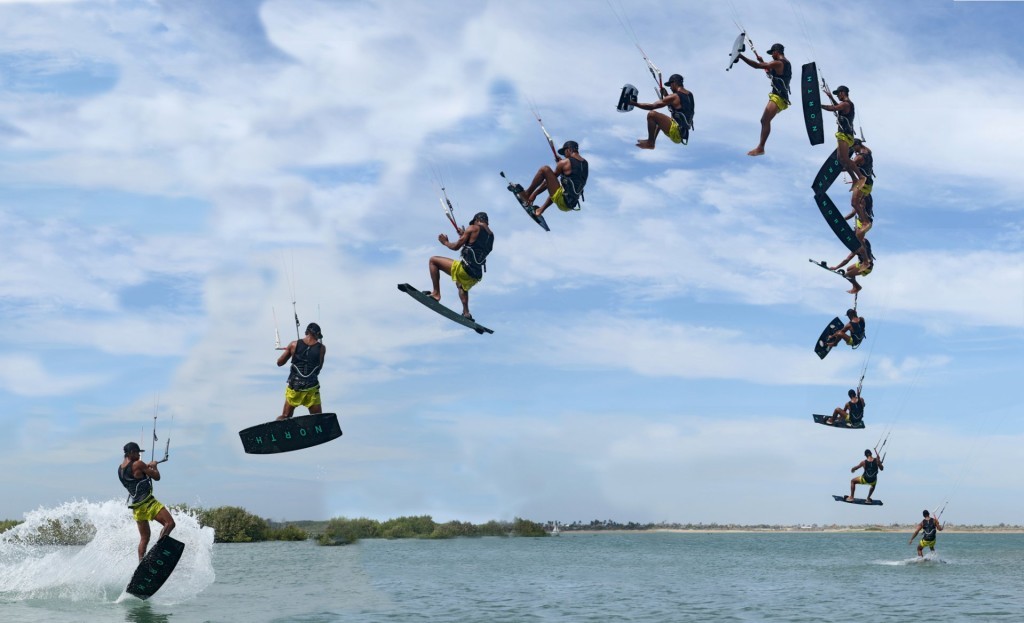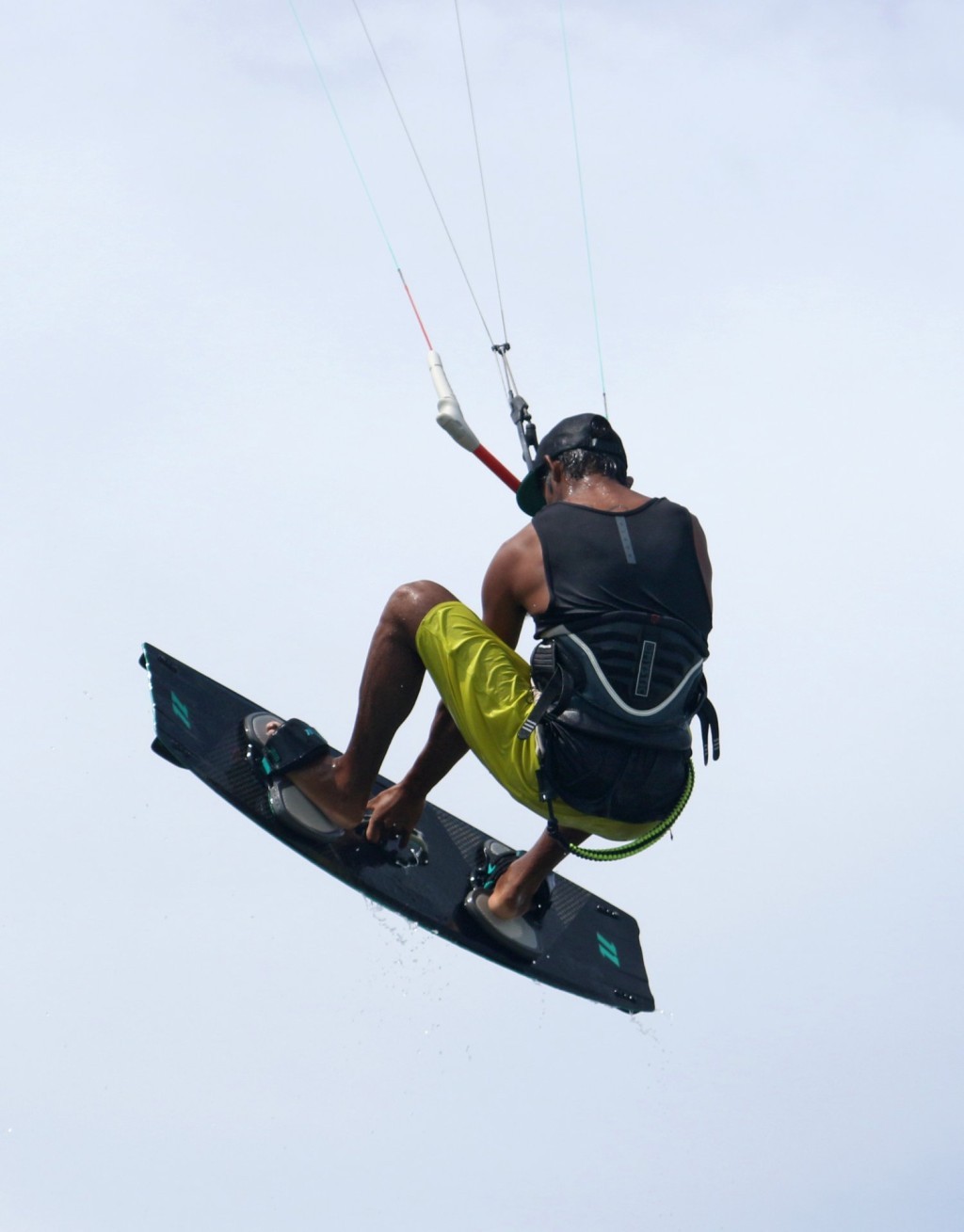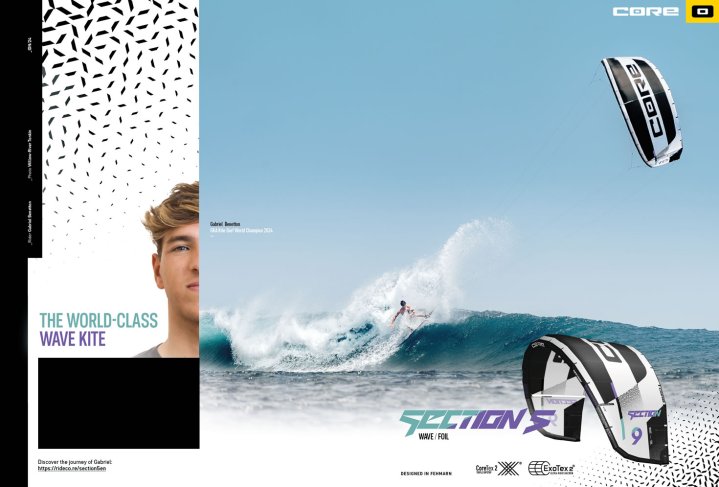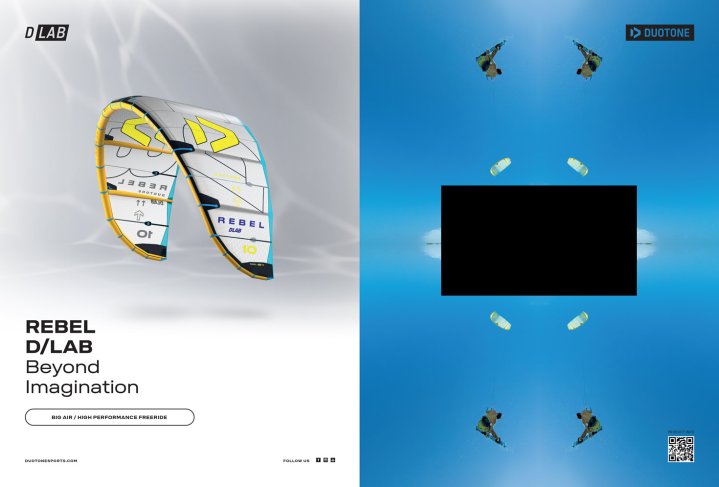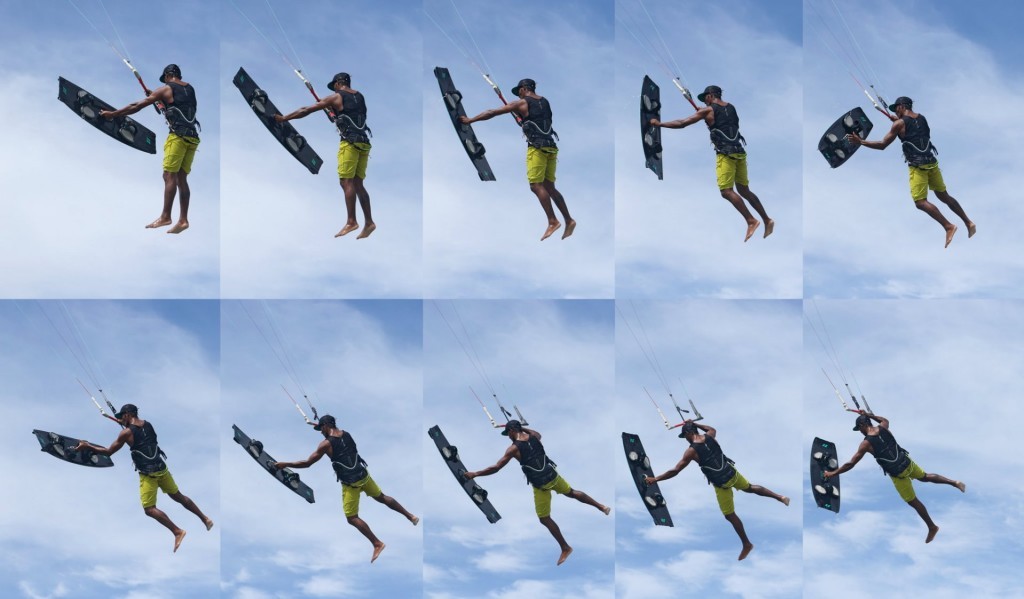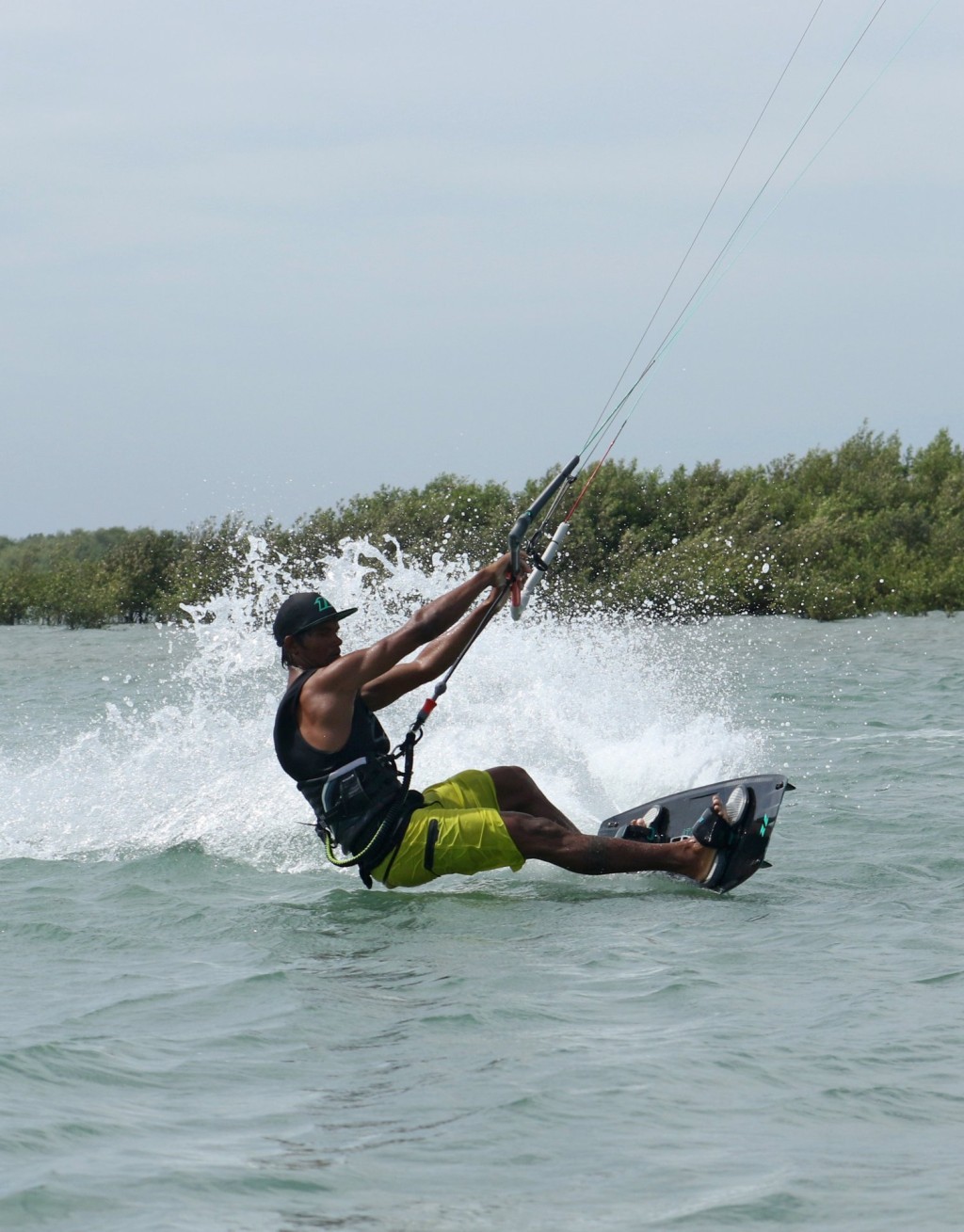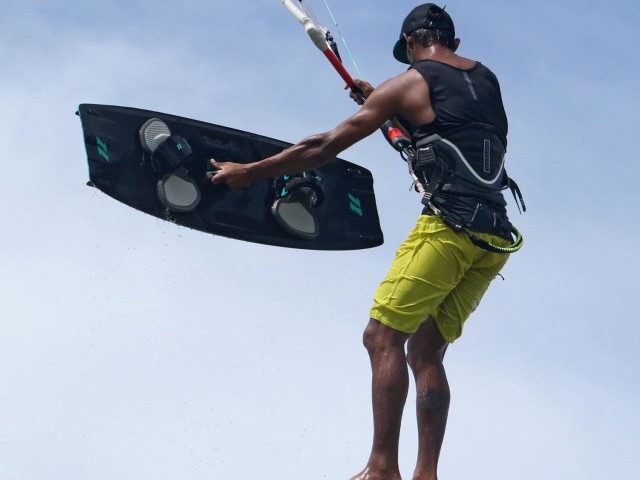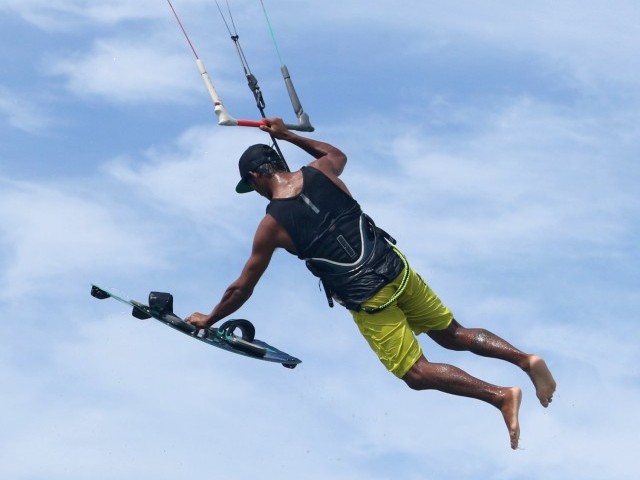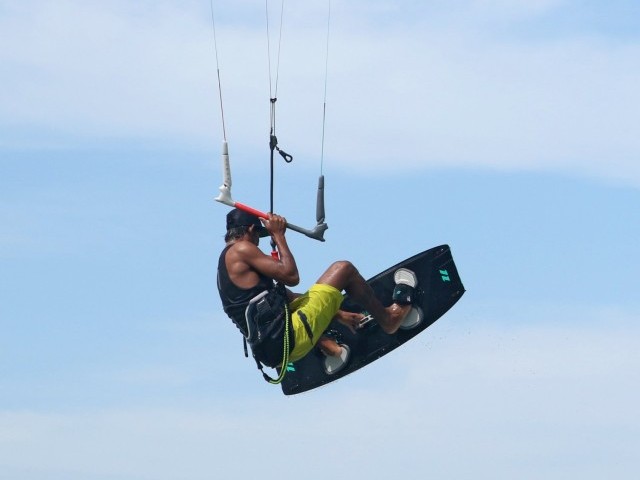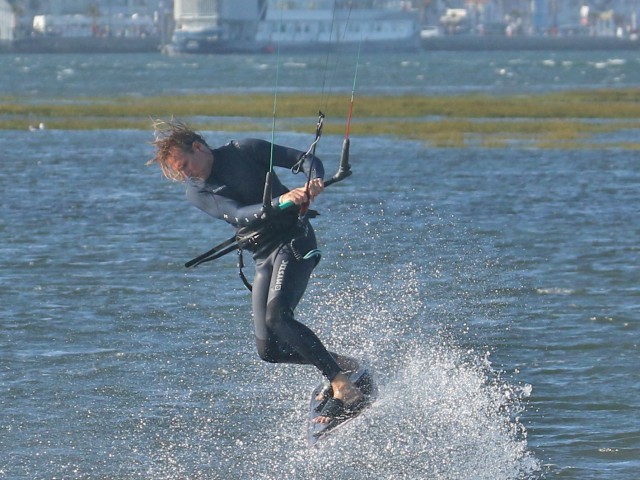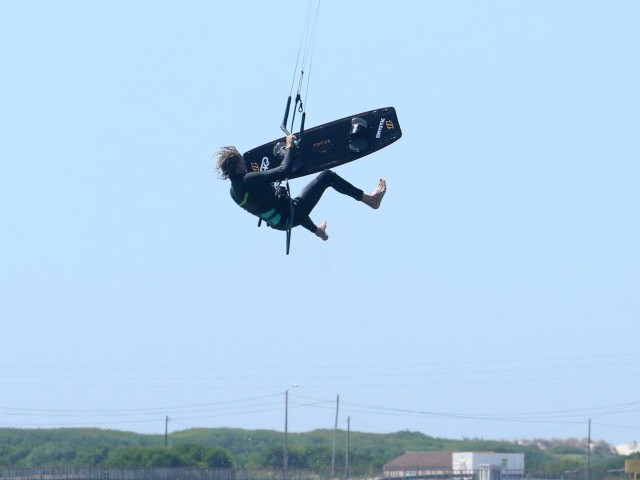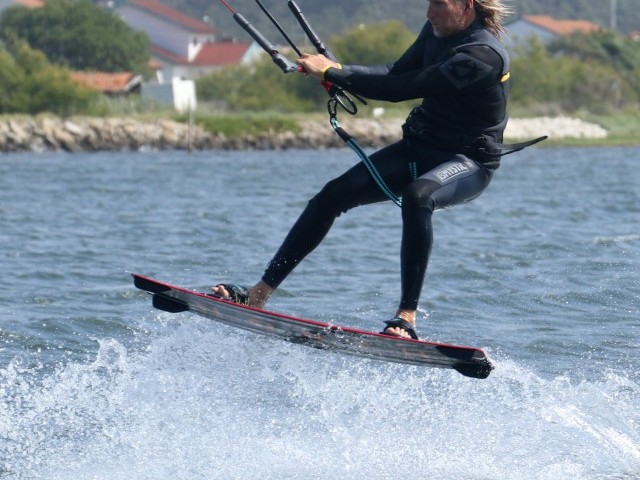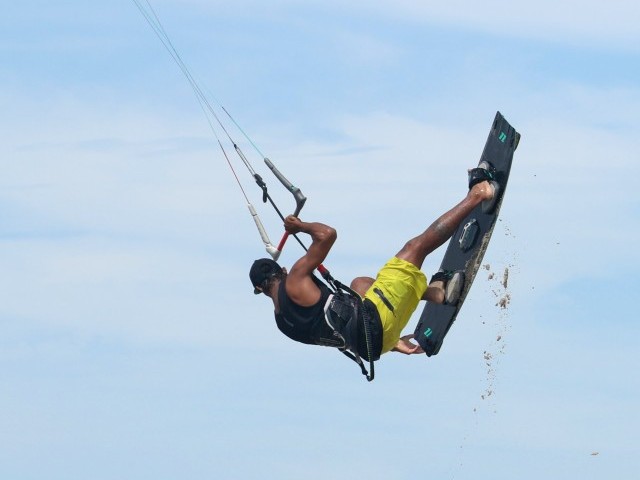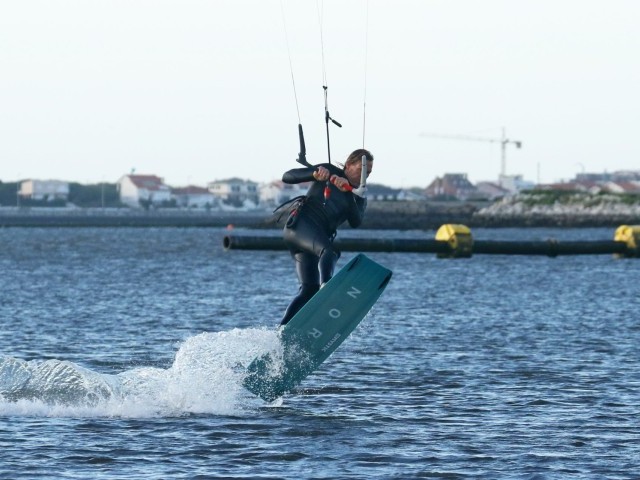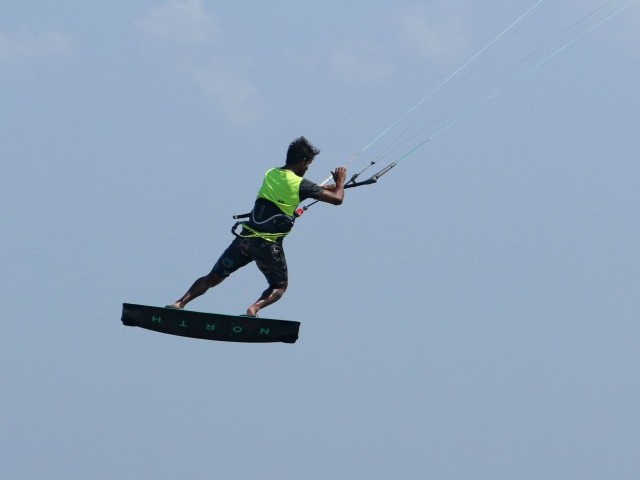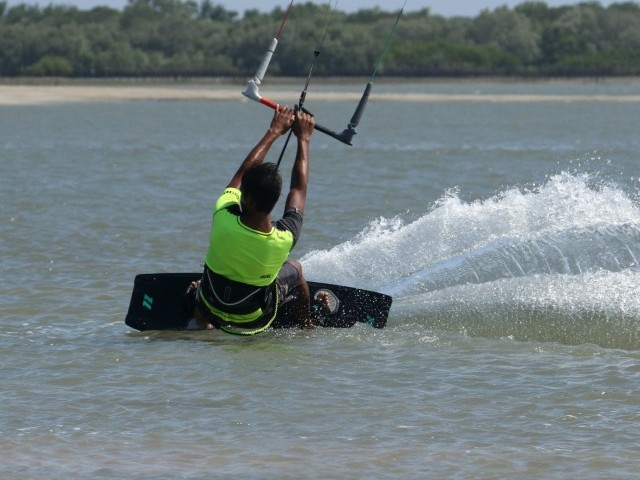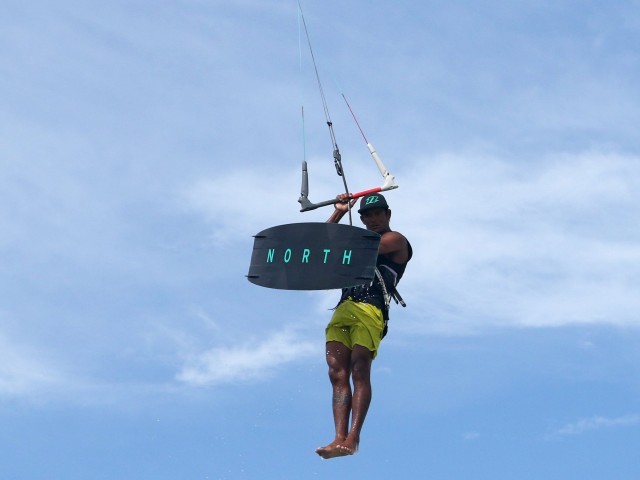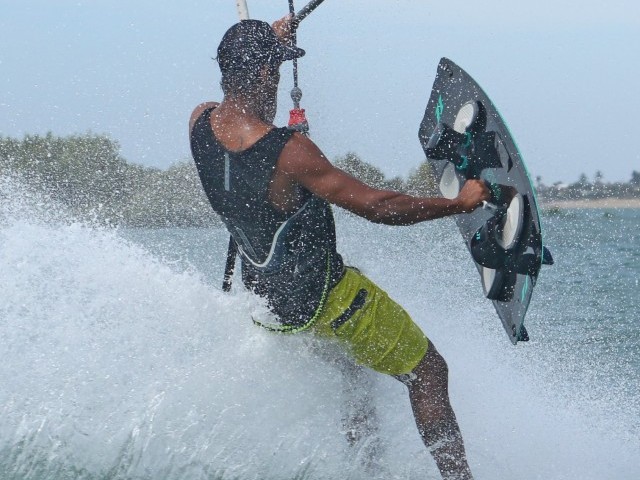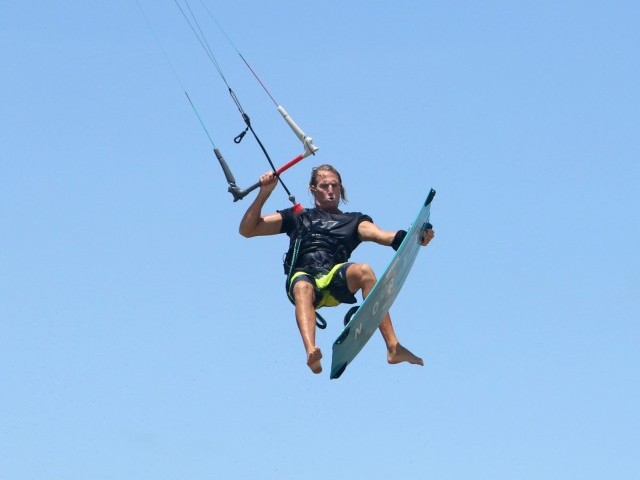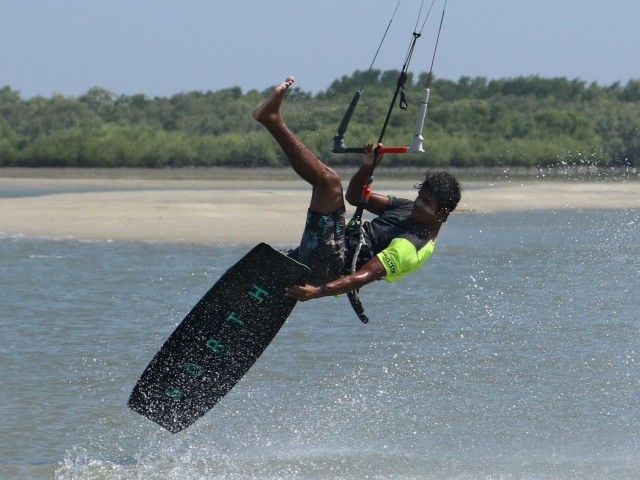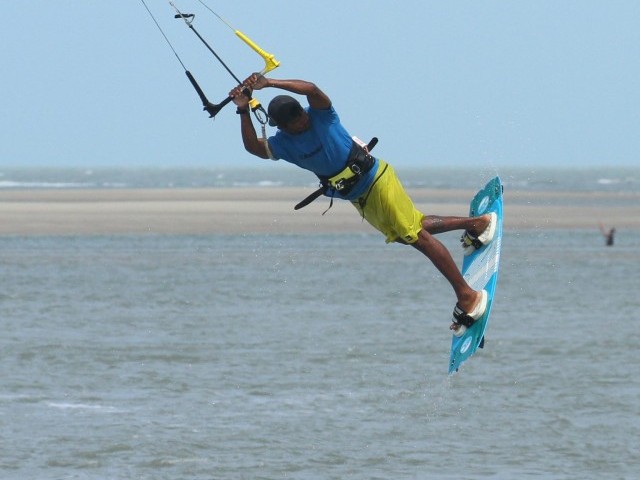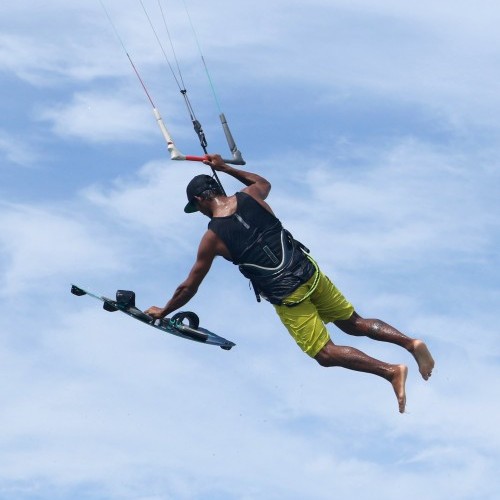
Board Off Varial with Handle
Technique / Advanced
Introduction
This really is a timeless classic. It adds some flair to a straight board off and brings back fond memories of the Space Monkeys generation and all their peers, spinning the board around tirelessly in competition the year before Martin et al went boom into freestyle:) A while back we covered the tail flip varial. Now we’ll go through the handle version, which is easier in strong winds as you keep the board under more control, and it requires less wrist strength. However, you’ll need a bit more cooperation from your body, as any handle tricks do require a tad more suppleness... If you’re going for this, we’ll assume that you’re happy jumping, that you’ve attempted a board off before, and at the very least for the more rambunctious amongst you, that you can grab a straight jump. The aim being that you’ll be happy removing a hand from the bar and concentrating on some in flight twin tip juggling. Big air maestro Heliarde is on hand to demonstrate the finer points, so let’s crack on.
It’s all good and well getting excited, rigging up and rushing out on the water with your best intentions of nailing this. However, the crux of this move is the way that you’ll be grabbing the handle and manoeuvring the board whilst gallantly flying your kite and yourself above the water. Pre-empting this with a bit of on land practice really won’t hurt, if you’ll excuse our understatement. Soft grass or sand is highly recommended. You don’t want to drop your prized carbon beauty on concrete, or bash up your real wood floor with your fins!
Have a look at Pic A.
This is the moment before Heliarde takes the board off. Under normal circumstances for a standard board off you’d reach your back hand towards the board and grab the handle from above as you would grab, well, a handle, or a bag, a toolbox, or a bucket of water. However, you can see that Heliarde has his hand in an underhand grip, as if he was about to do a bicep curl with a dumbbell. This in itself might take some getting used to, so it’s worth sitting yourself down on terra firma and grabbing your handle from underneath and removing your board. You’ll need to concentrate on keeping your arm straight, as the natural movement with this grip is to bend your arm, which will make getting the board off a tad trickier. Also try to lift the board up off your feet without grabbing the handle too tightly, use your fingers to lever it up. Once it’s off you can clamp onto it more firmly.
Next up is what you’ll be doing once you’ve prised the board off your feet, so that you can spin it 360˚. Before you can try spinning it, you need to get it a safe distance away from yourself and the lines. It may not be a propeller, but it’ll still smart if it hits you, and more importantly still, it won’t spin if it bumps something. Regardless of your priorities, it needs room to rotate.
The sequence Pic B is your next port of call.
Although Heliarde is flying, from these images it’s pretty easy to imagine that he’s standing in your back garden! The aim is to build up some momentum, turning your wrist quickly back to an overhand grip. Keeping your arm straight guarantees that the axis of rotation is around your hand and the handle, which means that the board won’t fly off randomly when you release it. You can see that Heliarde keeps hold of the board until it passes through 12 o’clock and his hand is in the thumbs up position. He then releases the board so that he can turn his wrist and hand back into an underhand grip to catch the board as it rotates around. This way the board has done a 180. Once he’s caught the board, he twists his wrist into an overhand grip and low and behold, the board completes a full 360 and is ready and waiting in the perfect position to be dropped back onto his feet.
Exactly when you release will come with practice. At first you might find it simpler to turn the full 180, then release the board, catch it underhand, and rotate the next 180˚, so that it’s not spinning when you release. Practise on land and you’ll soon have it nailed. Once you have, it’s time to have a crack on the water.
The Jump Pic C.
Unless you’re a gymnast, contortionist or part time Ninja, a bit of time, float and height will dramatically increase your chances, so you’ll want a decent edge, some speed and enough oomph in the kite. If the conditions allow, a larger kite will make life easier, as it won’t rip you off the water, so you’ll be able to get your knees and board up sooner. You’ll also get more hangtime and the kite won’t be tempted to stray as easily as if you’re one handed on a 7m. It’s also less intimidating if you’re not hammering downwind whilst airborne, so do feather the bar out on take-off to make sure that the kite flies up to 12 o’clock and not across the window. You can see that Heliarde has the edge of a champion, he’s sent the kite up and is feathering the bar out on the sweet spot so that he can hold his edge and get maximum height for minimum drift. And don’t forget to either wiggle your feet back on the pads a little or loosen the straps a touch, so that it’s less of a struggle to get the board off your feet and back on again.
Space Pic D.
We’ve already discussed getting the board off, the underhand grip and keeping your arm straight back when we looked at Pic A. Once it’s off, just like on land you need space to move the board for the full 360˚ varial. Once it’s off your feet, you can maximise space by dropping and extending your legs, so that you’re out of the way. However, you also need to get the board away from the bar and lines. Keeping your back arm extended, bring the board out to your side. Now, just like Heliarde, you’ll have plenty of space to twiddle.
Time Pic E.
Once you’ve completed the Varial you should hopefully arrive in a position that you’re more accustomed to if you’re already a board-offer. The main point to consider now is what’s been happening with the kite whilst you’ve been concentrating all your attention on the board. For the more experienced you’ll have done what you normally do. For those of you earlier in your board off careers, a quick refresher. One handed in the air will always feel more balanced if the kite is flying just behind 12 o’clock. In this example where Heliarde is jumping left to right, he has the kite between 11:15 and 11:50. It sounds silly, but too far back and you won’t have float, whilst any further forwards you’ll be pulled off balance and away from the board. It’s also essential to keep the bar in on the sweet spot, otherwise you won’t have the required float. Having your front hand centred on the bar helps keep the bar in without moving the kite too much. You can see here that although Heliarde has completed the Varial, his kite is still slightly behind him. The result, plenty of float and oodles of balance.
Snug Pic F.
Now “all” that’s left is to get the board back on and claim it. To get the board on, bring your knees back up and pull your board back in front of you. It’s easier to get the board on if you keep knuckles up, as it holds the straps near whilst pushing the pads away. The action is much like revving a motorbike or outboard throttle. As long as you can get your toes in far enough, you should have enough foot in to land. Once again, loose straps with make this a lot simpler. You’ll also need to get the kite moving. This is not only for the landing, it will also give you more time to get the board on. As you start to dive the kite, it will come over 12 o’clock, and give you a secondary lift. You can see that Heliarde is holding his board with a revving wrist, so straps are open and the heelside is held away. He’s started to dive his kite and as it comes over he’s enjoying even more float! From here on in, it’s a matter of continuing the dive and stomping a downwind landing.
Top Tips
Some land based practice for the Varial is a must. Make sure that you can do it without thinking on land. If so, you’re half way there. After that loosen your straps and have a pop. Have a look at the sequence and videos to see it step by step and live.
Common Problems
If you’re struggling with time to squeeze all the necessaries in, you need to take a step back and look at your jump, and in particular your take off. You need to give the kite a good send to get enough height and time. However, if you really wang it, you’ll get very extended on take-off and as such you’ll get the board off later. Try mellowing the send slightly and make sure the kite goes up, don’t strangle it by keeping the bar pulled right in. Sometimes less is more. And don’t forget to dive the kite when you’re coming down. That extra lift will give you valuable extra time to squeeze the toes in.
If you can’t get the board off, really concentrate on getting your knees up high, make sure that you keep your grabbing arm straight and don’t grip the handle as if your life depends on it – use your fingers to pry the board off.
If you’re feeling unbalanced in the air or pulled forwards as you’re putting the board back on. This is likely happening because your kite is too far forwards in the window. Make sure that you send it past 12 for take-off, and don’t redirect it all the way back to 12 once you’re going up. Level the bar as you stamp but leave it at that.
Keystones
- Solid reliable take-off with good send
- Knees, feet and board up quickly
- Underhand handle grab with straight arm
- Rotate, release, underhand catch, rotate!
- Board in front, and dive as feet go in
This technique article was in Issue 85 of IKSURFMAG.
Related
By Christian and Karine
Christian and Karine have been working together as a coaching team, running improver to advanced kitesurfing clinics since 2003.






